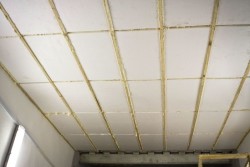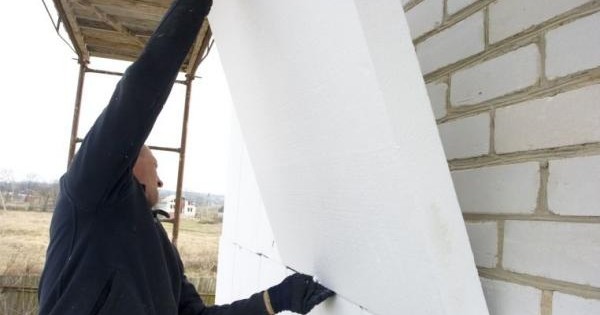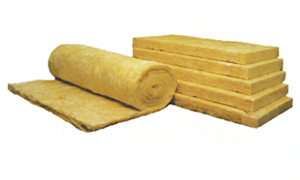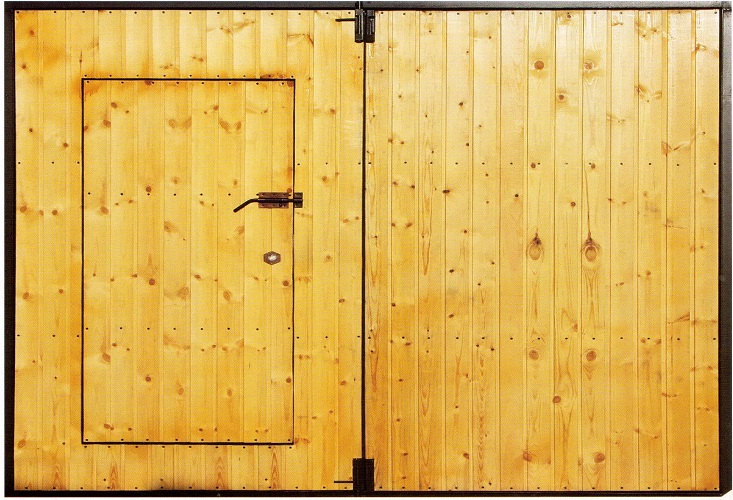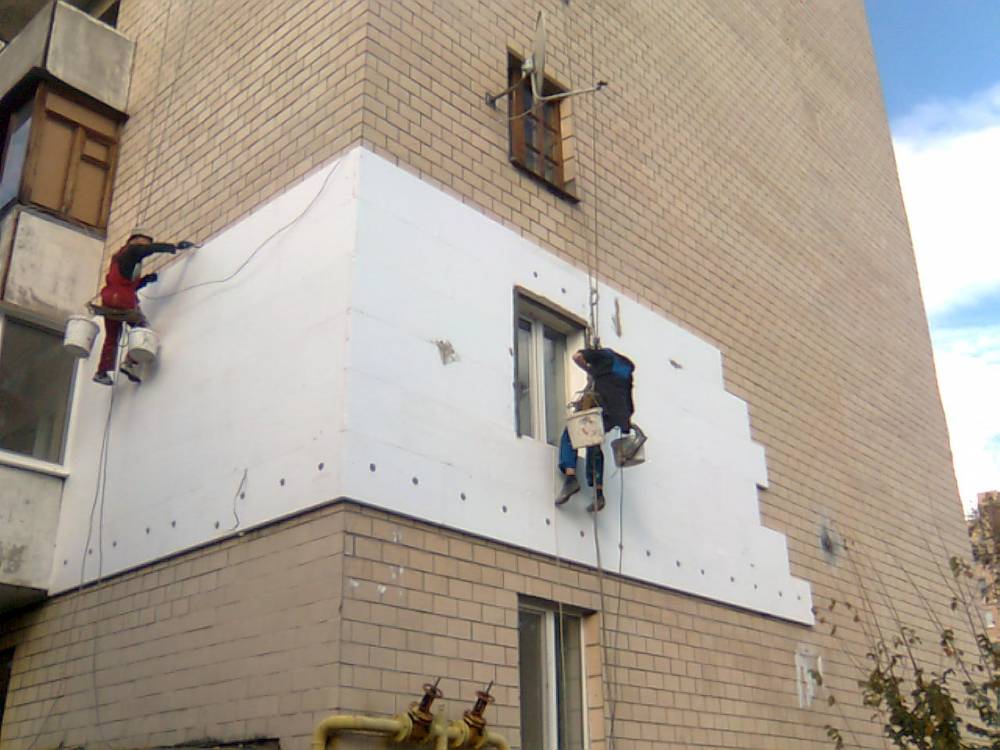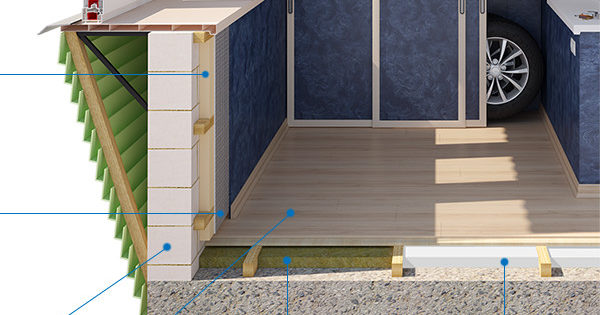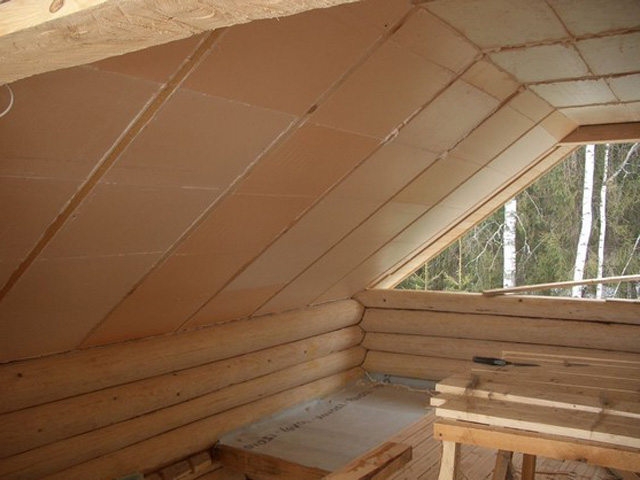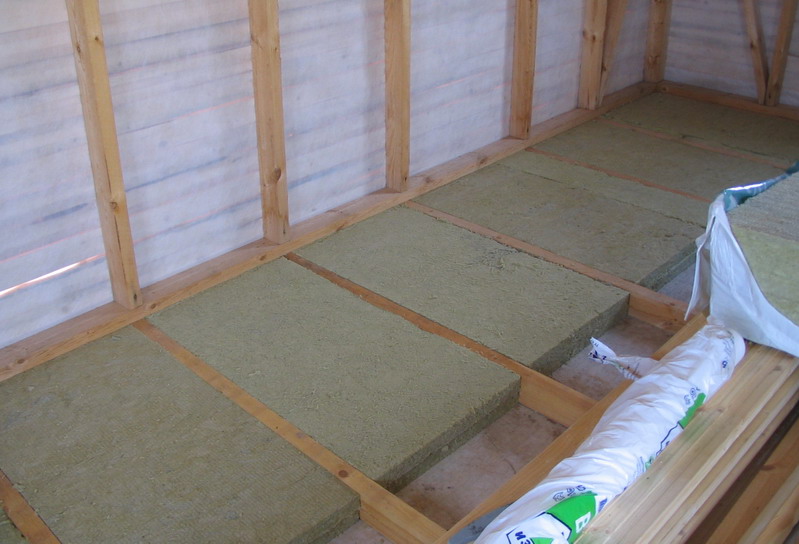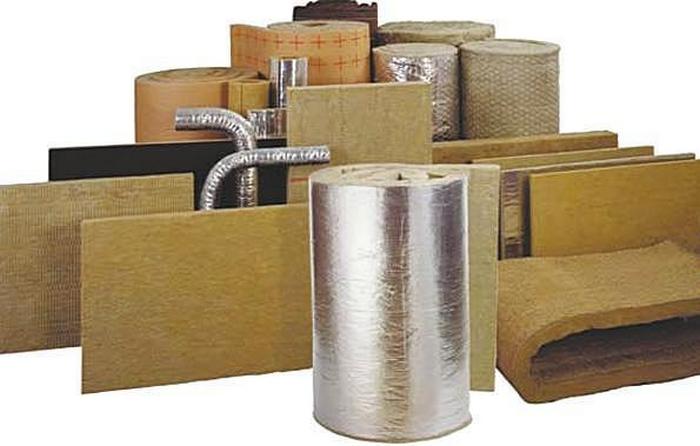5 options for insulating the garage from the inside
Our climate is different in that a low temperature reigns for 4-6 months, which is not only not very comfortable for humans, but also harmful to cars, our faithful helpers in the matter of movement. Frosts and precipitation in winter can harm the car quite a lot, and many try to leave the car in the garage as often as possible, thereby protecting it from the negative effects. But if the garage is not insulated, then the “iron horse” will not be completely protected from the external environment, because the thin walls hardly prevent the penetration of cold masses into the premises. To keep the car safe in any weather, you need to take care of the garage insulation for it in advance.
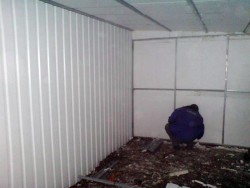 It is immediately worth noting that overdoing insulation and creating room temperature in the garage is also unnecessary, unless, of course, you plan to go outside during the winter. Otherwise, a strong temperature contrast can extremely negatively affect the car body, becoming the cause of the onset of corrosion. Also, do not forget about ventilation, so that excess moisture goes out into the street along with harmful gases.
It is immediately worth noting that overdoing insulation and creating room temperature in the garage is also unnecessary, unless, of course, you plan to go outside during the winter. Otherwise, a strong temperature contrast can extremely negatively affect the car body, becoming the cause of the onset of corrosion. Also, do not forget about ventilation, so that excess moisture goes out into the street along with harmful gases.
The requirements for thermal insulation of the garage are not as strict as for the insulation of residential premises. And if for the latter, insulation from the inside is extremely undesirable, then in the case of a garage it is no less effective and often becomes the only possible option. So, if the design is located close to others, then it will not work to insulate it from the outside. Moreover, some types of garages need double insulation, for example, metal. The only drawback of insulation from the inside is that the area can be reduced, but in order to negate such a “side effect”, you need to select a heat insulator that will cope with its task with a minimum thickness. So, what materials are suitable for insulating the garage from the inside?
No. 1. Styrofoam
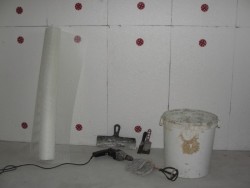 Styrofoam - the most popular option in this sense, all work with it can be easily done independently, which is why it has been enjoying such success for several decades in a row. The advantages of this material are mass.
Styrofoam - the most popular option in this sense, all work with it can be easily done independently, which is why it has been enjoying such success for several decades in a row. The advantages of this material are mass.
- At first, it is lightweight and is not able to deform the walls of the garage, does not require the creation of an additional frame, and plates of material can be glued to the walls or mounted with dowels.
 Secondly, working with such a heater is very simple, because it is easily cut with a knife, it can be of any thickness and size, which allows you to choose the perfect option for any climatic conditions.Moreover, the foam is not afraid of mold, fungus, moisture and rodents, so you can be sure of its integrity and hygiene, and additional insulation with films will also not be needed.
Secondly, working with such a heater is very simple, because it is easily cut with a knife, it can be of any thickness and size, which allows you to choose the perfect option for any climatic conditions.Moreover, the foam is not afraid of mold, fungus, moisture and rodents, so you can be sure of its integrity and hygiene, and additional insulation with films will also not be needed.
If we add to all this durability and low cost, then we get the perfect material for insulation. True and not without flaws: polystyrene is a combustible material, so it is better to choose those products that are impregnated with flame retardant. Yes, and under the influence of sunlight, the foam is gradually able to turn yellow, but inside the garage a layer of such insulation will last for a long time.
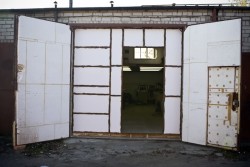 Styrofoam can be of several types, but the most popular when warming garages is polystyrene foam. It, depending on the characteristics of production, can be pressed, bezpresovanny or extrusion.Taking into account the ability of this material to burn, it is better to stop your choice on a material like PSB-S, which includes a flame retardant. Expanded polystyrene has good heat and sound insulation, it is easy to process, not susceptible to infection by fungus. There is a myth that it is harmful to health, as it supposedly contains residual styrene. There is some truth to this statement, but to protect yourself it is better to buy material from trusted manufacturers who adhere to manufacturing technology and supply safe products. Also pay attention to the fact that decent results in insulation can be achieved if the insulation is mounted not only on the walls, but also on goal and the ceiling.
Styrofoam can be of several types, but the most popular when warming garages is polystyrene foam. It, depending on the characteristics of production, can be pressed, bezpresovanny or extrusion.Taking into account the ability of this material to burn, it is better to stop your choice on a material like PSB-S, which includes a flame retardant. Expanded polystyrene has good heat and sound insulation, it is easy to process, not susceptible to infection by fungus. There is a myth that it is harmful to health, as it supposedly contains residual styrene. There is some truth to this statement, but to protect yourself it is better to buy material from trusted manufacturers who adhere to manufacturing technology and supply safe products. Also pay attention to the fact that decent results in insulation can be achieved if the insulation is mounted not only on the walls, but also on goal and the ceiling.
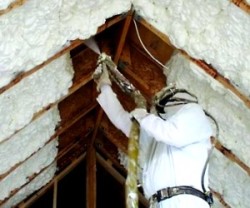 The second material in this group is penoizol, which is often called liquid foam. They make it in the same place where they will use it, and the resulting foam quickly hardens, filling all the cracks. This is one of the most reliable methods of warming, which will create an excellent barrier to cold, because the thermal conductivity of this substance is quite low. Moreover, the material is durable, and manufacturers claim that it will serve faithfully for at least 40 years, although scientists call the figure 100 years or more. The material does not support combustion, but a similar method of thermal insulation cannot be called the most budgetary, since special equipment and, as a rule, the help of professionals will be needed. And the presence on the market of dishonest manufacturers offering not the highest quality products, scares away many.
The second material in this group is penoizol, which is often called liquid foam. They make it in the same place where they will use it, and the resulting foam quickly hardens, filling all the cracks. This is one of the most reliable methods of warming, which will create an excellent barrier to cold, because the thermal conductivity of this substance is quite low. Moreover, the material is durable, and manufacturers claim that it will serve faithfully for at least 40 years, although scientists call the figure 100 years or more. The material does not support combustion, but a similar method of thermal insulation cannot be called the most budgetary, since special equipment and, as a rule, the help of professionals will be needed. And the presence on the market of dishonest manufacturers offering not the highest quality products, scares away many.
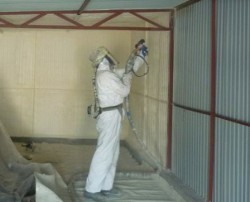 Another liquid insulation - polyurethane foam, which is applied to the walls in the form of foam, gradually hardens, forming a monolithic layer of thermal insulation. It does not aggravate the walls of the garage, since for the most part it consists of air, perfectly adheres to any surfaces, does not take away the useful area of the garage. The material does not support combustion, but it can smolder when exposed to very high temperatures. The only drawback is the need for special equipment and specialists for quality work.
Another liquid insulation - polyurethane foam, which is applied to the walls in the form of foam, gradually hardens, forming a monolithic layer of thermal insulation. It does not aggravate the walls of the garage, since for the most part it consists of air, perfectly adheres to any surfaces, does not take away the useful area of the garage. The material does not support combustion, but it can smolder when exposed to very high temperatures. The only drawback is the need for special equipment and specialists for quality work.
No. 2. Mineral wool
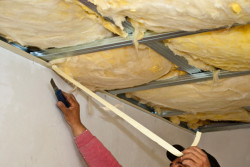 Mineral wool - A good insulation, which boasts a low coefficient of thermal conductivity, the ability to breathe, safety for health, as well as incombustibility. Basalt wool, which in wide circles is also called mineral wool, has excellent sound absorption. For internal insulation use mats with a density of not more than 180 kg / m3.
Mineral wool - A good insulation, which boasts a low coefficient of thermal conductivity, the ability to breathe, safety for health, as well as incombustibility. Basalt wool, which in wide circles is also called mineral wool, has excellent sound absorption. For internal insulation use mats with a density of not more than 180 kg / m3.
disadvantages this kind of insulation is also present. So, mineral wool is very afraid of moisture, so it must be protected with a vapor barrier. Otherwise, moisture collected from the environment will cause loss of thermal insulation properties. The cost of mineral wool is slightly more than that of polystyrene, but still quite affordable. True, such a method of insulation is suitable for those whose garage is quite spacious, because for mineral wool it is necessary to build a frame, in the cells of which the insulation itself is mounted with a thick layer (10 cm or more).
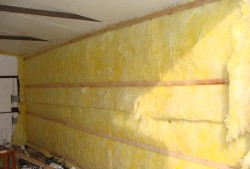 Separately, it is worth noting the warming glass wool - This is one of the varieties of mineral wool. Since it is made of molten glass waste or rocks saturated with silicon, needle-like particles are present in the structure, which represent the main danger during operation. When insulating the garage with such material, all personal safety requirements must be strictly observed so that particles of material do not get into the skin, eyes or respiratory system. Glass wool is very afraid of water, and if it gets a little wet during installation, then the material can simply be thrown away, since all the thermal insulation properties are already lost. And although the price for it is much lower than for stone wool, it is not very popular among those who want to insulate the garage from the inside, since its installation is complicated.
Separately, it is worth noting the warming glass wool - This is one of the varieties of mineral wool. Since it is made of molten glass waste or rocks saturated with silicon, needle-like particles are present in the structure, which represent the main danger during operation. When insulating the garage with such material, all personal safety requirements must be strictly observed so that particles of material do not get into the skin, eyes or respiratory system. Glass wool is very afraid of water, and if it gets a little wet during installation, then the material can simply be thrown away, since all the thermal insulation properties are already lost. And although the price for it is much lower than for stone wool, it is not very popular among those who want to insulate the garage from the inside, since its installation is complicated.
No. 3. Warm plaster
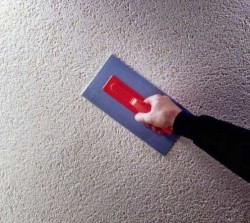 Warm plaster - a relatively new type of insulation, which in appearance resembles regular plasterbut instead of sand, it contains materials with low thermal conductivity: vermiculite, polystyrene foam, sawdust, expanded claypumice etc. Became the most popular stucco with polystyrene granules, since it has universal properties, can be used both inside and outside, it has the best thermal insulation performance. Sawdust-based plasters are also common, which in their composition also include components such as paper, clay and sand. This composition is just suitable for internal insulation, but it is worthwhile to be prepared for the fact that such plaster dries for a long time, and to speed up the process, you need a good ventilation. Vermiculite based compounds can also be used to insulate the garage from the inside.
Warm plaster - a relatively new type of insulation, which in appearance resembles regular plasterbut instead of sand, it contains materials with low thermal conductivity: vermiculite, polystyrene foam, sawdust, expanded claypumice etc. Became the most popular stucco with polystyrene granules, since it has universal properties, can be used both inside and outside, it has the best thermal insulation performance. Sawdust-based plasters are also common, which in their composition also include components such as paper, clay and sand. This composition is just suitable for internal insulation, but it is worthwhile to be prepared for the fact that such plaster dries for a long time, and to speed up the process, you need a good ventilation. Vermiculite based compounds can also be used to insulate the garage from the inside.
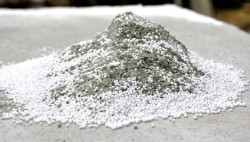 Similar option is different many advantages. So, walls can not be aligned in advance and not prepared at all, “warm” plaster has excellent adhesion to wood, metal and stone, it does not require the use of reinforcing meshes (with the exception of some difficult cases). In addition, it is very simple and easy to apply and can be dispensed with without assistance, managing as soon as possible. But with all this, the material is clearly inferior to traditional heaters, and it is better to use it in combination with other heat-insulating materials. Putting a thick layer is not an option, since with a thickness of more than 5 cm there is a risk that the plaster will crack and peel off under its own weight.
Similar option is different many advantages. So, walls can not be aligned in advance and not prepared at all, “warm” plaster has excellent adhesion to wood, metal and stone, it does not require the use of reinforcing meshes (with the exception of some difficult cases). In addition, it is very simple and easy to apply and can be dispensed with without assistance, managing as soon as possible. But with all this, the material is clearly inferior to traditional heaters, and it is better to use it in combination with other heat-insulating materials. Putting a thick layer is not an option, since with a thickness of more than 5 cm there is a risk that the plaster will crack and peel off under its own weight.
Number 4. Heat insulating paint
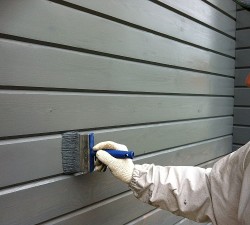 Another modern material that impresses not only with ease of use, but also with efficiency. Here are just a few striking examples: a paint layer of 1 mm is equivalent to a layer of mineral wool of 50 mm, and a paint layer applied according to the instructions is the same as a wall of 1.5 bricks. The unique properties of this insulation are based on structural features and principle of operation. All heat-insulating materials known to us work on the principle of a barrier, preventing heat from leaving space. Heat-insulating paint becomes not only an obstacle for the penetration of infrared rays outside, but also their reflector, as a result of which it is much more difficult for heat to leave the boundaries of such a room. A similar effect was possible due to the presence of a vacuum inside, which prevents the passage of infrared rays.
Another modern material that impresses not only with ease of use, but also with efficiency. Here are just a few striking examples: a paint layer of 1 mm is equivalent to a layer of mineral wool of 50 mm, and a paint layer applied according to the instructions is the same as a wall of 1.5 bricks. The unique properties of this insulation are based on structural features and principle of operation. All heat-insulating materials known to us work on the principle of a barrier, preventing heat from leaving space. Heat-insulating paint becomes not only an obstacle for the penetration of infrared rays outside, but also their reflector, as a result of which it is much more difficult for heat to leave the boundaries of such a room. A similar effect was possible due to the presence of a vacuum inside, which prevents the passage of infrared rays.
Advantages of Thermal Insulation Paints can be listed for a long time. They have excellent adhesion to most building materials, have good thermal insulation performance, are not afraid of moisture, are vapor permeable, and protect metal from corrosion. The layer of such insulation has a very low weight, so it does not burden the design, and the application process itself is as simple as possible and does not differ much from the use of conventional paints. The list of advantages supplements UV resistance, ease of repairing damaged coatings, and resistance to high temperatures (paint does not burn, but only charred at 2600C or folds out at 8000C), environmental friendliness. But this is not to be noted. minus, as a rather high cost of paint, its high consumption, and not always it can be used as an independent heater, but nevertheless, this option is used more often for warming a garage.
No. 5. Reflective insulation
Reflective insulation is the latest insulation, which is today called one of the most effective. Moreover, it is optimal for insulating the garage from the inside, as it has a small thickness, which means it does not take up a lot of usable area. The material itself consists of a layer of heat insulator coated with a metallized film, and that is why this type of thermal insulation is called foil.
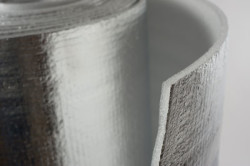 As the insulation layer, different materials can be used: polyethylene foam, polystyrene foam, mineral wool or basalt insulation. For internal thermal insulation of the garage as the main layer polyethylene foam and mineral wool are optimally suited, and the insulation itself can take the form of plates or rolls. The main layer can have a thickness of 2-50 mm, and is applied on top of it aluminum foil very thin layer by heat welding. A metallized film made of polypropylene can also be used, the presence of an additional layer of fiberglass is not excluded. The foil layer can be either one-sided or two-sided.
As the insulation layer, different materials can be used: polyethylene foam, polystyrene foam, mineral wool or basalt insulation. For internal thermal insulation of the garage as the main layer polyethylene foam and mineral wool are optimally suited, and the insulation itself can take the form of plates or rolls. The main layer can have a thickness of 2-50 mm, and is applied on top of it aluminum foil very thin layer by heat welding. A metallized film made of polypropylene can also be used, the presence of an additional layer of fiberglass is not excluded. The foil layer can be either one-sided or two-sided.
How does this type of thermal insulation work? and why is it considered so effective? So, the foil reflects the bulk of the heat waves, preventing them from leaving the room. Those infrared rays that have passed through the foil are held back by a layer of insulation, minimizing heat loss. As a result, we get a material with a low coefficient of thermal conductivity, good sound insulation, low weight, fire resistance and resistance to moisture. In addition, it is environmentally friendly and easy to fit. Minuses, due to the short duration of use of the material, not all are known yet, but such a heater lends itself to corrosion.

